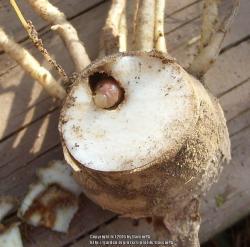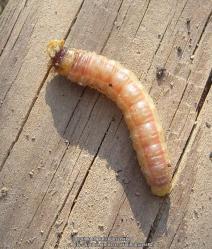Tom, and Dave pretty well have it covered, although I will add that the "Bayer" product.....with Merit....is a systemic type poison. It's absorbed into the plant, through the leaves, and taken up through the roots (I'm speaking about the "liquid" grub killer), so anything that takes a bite of ANY part of the plant....is gonna' die ! The spring application will remain active for *about* 3 months....depending on rainfall amounts, and the corresponding growth rate of the plants.....and then needs to be re applied. Bayer also makes a "granular:' form of the same product....this only enters the plant via the root system, AND it also contains a fertilizer....which *may* , or *may not* be desirable for you, depending on existing soil fertility. IMHO, it will do some good against your borers, until they pupate....if they take a bite...they die. Downside to these products is that every part of the plant is "poison"...leaf, stalk , root, and rhizome....and that includes the pollen....so any insects...like honey bees....that gather pollen will probably be affected.
The "BT"....which is a "natural" product....works by killing the borer grubs with a "bacterial disease", and again, any grub, caterpillar, or worm that eats it , is going to sicken, and die. It's NOT systemic, and any rains, or heavy dew, will wash it off the plant....so it needs to be re applied quite often.....I do it after a rain, or about every 10 days,- 2 weeks. It also doesn't work as "fast" as the other product, and you will see more signs of borer activity.....they don't die as quickly, so they have a chance to eat more! The "jury is still out" on BT's affect (if any) on pollenators...it won't kill the honey bees, but WILL kill their larva...as far as I know, they still are unsure if it can be taken back, with the bees, into the hive, where it would harm the larva.
There have been a few people using diatomaceous earth....actually injecting it into the plant, at the base, to see if that helps ( The "DE" has sharp edges, and spines , on a microscopic level, that actually "cut" the borer grubs, as they crawl over and through it) I've never tried it on iris, but HAVE tried it on summer squash, for "squash borers"....lots of time consuming work, and I couldn't see many positive results

.
The "beneficial nematodes "DO work, but , IMHO are WAY to pricey....applied at the rates they recommend , it was going to cost me about $800 to treat my 3500 sq ft of iris beds

.And , in my climate, they aren't expected to "winter over"...so would need reapplied, every year

.
The "Milky Spore" disease would also work on iris borers, but I have no idea how you would get it "into" the plant...so it would only kill the ones in the soil, or "on" the leaf.
Good luck with whatever method you use !
 cut rhizome with borer
cut rhizome with borer the critter after "convinced" to leave its dinner
the critter after "convinced" to leave its dinner same rhizome next season with nice healthy fan
same rhizome next season with nice healthy fan